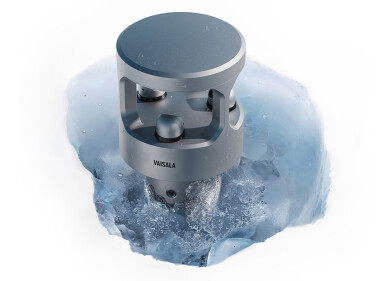Air Monitoring
The surprising link between air pollution and declining honeybee populations
Jan 10 2024
Author credit - Jennifer Kingman
US National Agricultural Statistics indicated that there was a dramatic honeybee population decline (from around six million hives to 2.4 million hives) between the mid-70s and 2008. These statistics raised worldwide alarms since bees are part of the biodiversity upon which we all depend for survival. They provide high-quality food, are an important source of income for many rural livelihoods, and are the most widespread and managed pollinators in the world. They are necessary for food security, with the United Nations reporting that a third of the world’s food production depends on bees. Alongside the many threats to bee survival (including pesticides and predators), pollution stands out as a threat that must be eliminated if we are to protect our bees and our Planet. Read on to discover how pollination leads to declining honeybee populations and discover what you can do to put a stop to this devastation.
Air pollution and floral resources
The main way in which pollution affects bee wealth is by interfering with their ability to find necessary floral resources. Several studies have shown that air pollution affects bees’ ability to recognise the volatile organic compounds (VOCs) from plants and flowers. One study showed that honeybees that were exposed to petrol exhaust pollution took significantly longer to learn plant VOCs and forget them faster. Another showed that exposure to exhaust emissions at levels below set standards reduced flower visits by pollinators by up to 90%. Harmful particulate matter such as dust and heavy metals can also settle on the fine hairs on bees’ bodies, since these hairs are electrically charged so they can attract pollen.
Not all VOCs are bad
If you have read about VOCs and indoor air pollution, then you know that VOCs are a type of gas that can be emitted by everything from furniture to plywood, and cleaning supplies. When they are used indoors they can become ten times more concentrated than they are outdoors, thus posing health risks. Just a few symptoms of indoor exposure to VOCs include respiratory issues, headaches and nausea, and irritation of the eyes, nose, and throat. To reduce VOC levels in your interiors, aim to ventilate rooms frequently, use an air purifier if necessary, avoid pressed wood furniture and soft furnishings containing flame retardants, and use natural or “green” cleaning products instead of those containing harsh products. Also be aware that not all VOCs have an equal impact on the environment. For instance, as seen above, those emitted by plants are necessary for pollinators to identify them, and they have a vital role to play in plant evolution.
Reduced food abundance
A second important way in which pollution affects bees is by reducing the amount of food available to them. Take the case of the marsh fritillary butterfly, which relies on a plant called “devil’s bit scabious.” Unfortunately, the use of fertilisers and atmospheric nitrogen has led to this plant being outcompeted for resources by faster-growing plants. Therefore, butterflies have suffered a big decline in the amount of food that is available to them, causing their collapse. Studies have also shown that plants enriched with excess nitrogen lead to the death of larvae and workers in colonies of bumblebees. Excessive enrichment changes the rate at which larvae develop because it increases plant height and stops the sun from reaching the soil’s surface. Thus, the delicate timing of larval development can become skewed and impact critical growth stages of host plants.
How can you help?
Currently, many governments across the globe are working to reduce the effects of air pollution on bees by implementing clean air strategy plans and reducing nitrogen deposition. You can do your share by working to reduce the size of your environmental footprint and (if you have a garden) by growing bee- and butterfly-friendly plants. Simply allow more native, wild plants to grow, plant more flowers in your home and your local community, provide bees with access to water, embrace weeds, avoid the use of pesticides, and create bee hotels.
Air pollution affects the health of bees and other pollinators. It does so by interfering with their ability to identify sources of food and by reducing the availability of important food sources. Government and individuals need to work hand in hand to create bee-friendly environments and lower the amount of air pollution produced. This can be achieved through dedicated environmental programs and individual efforts—including the use of public transport and the growth of bee-friendly gardens.
Digital Edition
AET 28.4 Oct/Nov 2024
November 2024
Gas Detection - Go from lagging to leading: why investment in gas detection makes sense Air Monitoring - Swirl and vortex meters will aid green hydrogen production - Beyond the Stack: Emi...
View all digital editions
Events
Jan 12 2025 Abu Dhabi, UAE
Jan 14 2025 Abu Dhabi, UAE
Jan 20 2025 San Diego, CA, USA
Carrefour des Gestions Locales de L'eau
Jan 22 2025 Rennes, France
Safety, Health & Wellbeing LIVE
Jan 22 2025 Manchester, UK




_(4).jpg)









.jpg)




